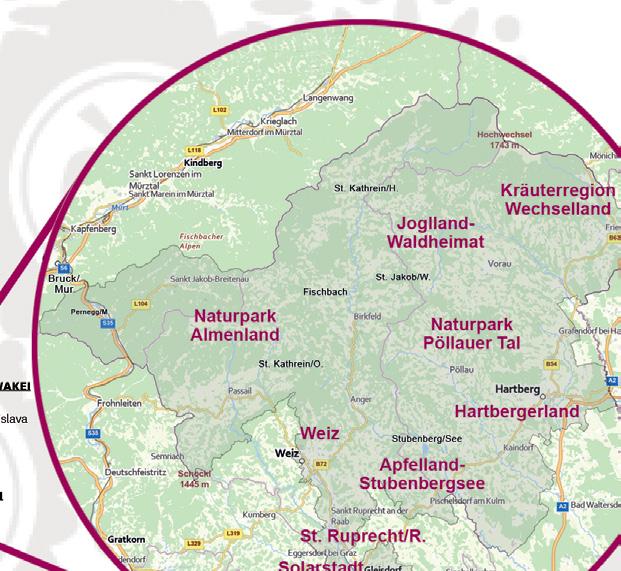HOLIDAYS

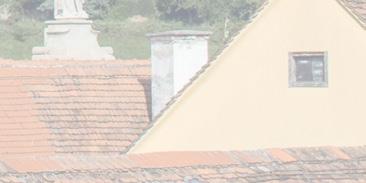

in the Nature Park Pöllau Valley in the Adventure Region Eastern Styria
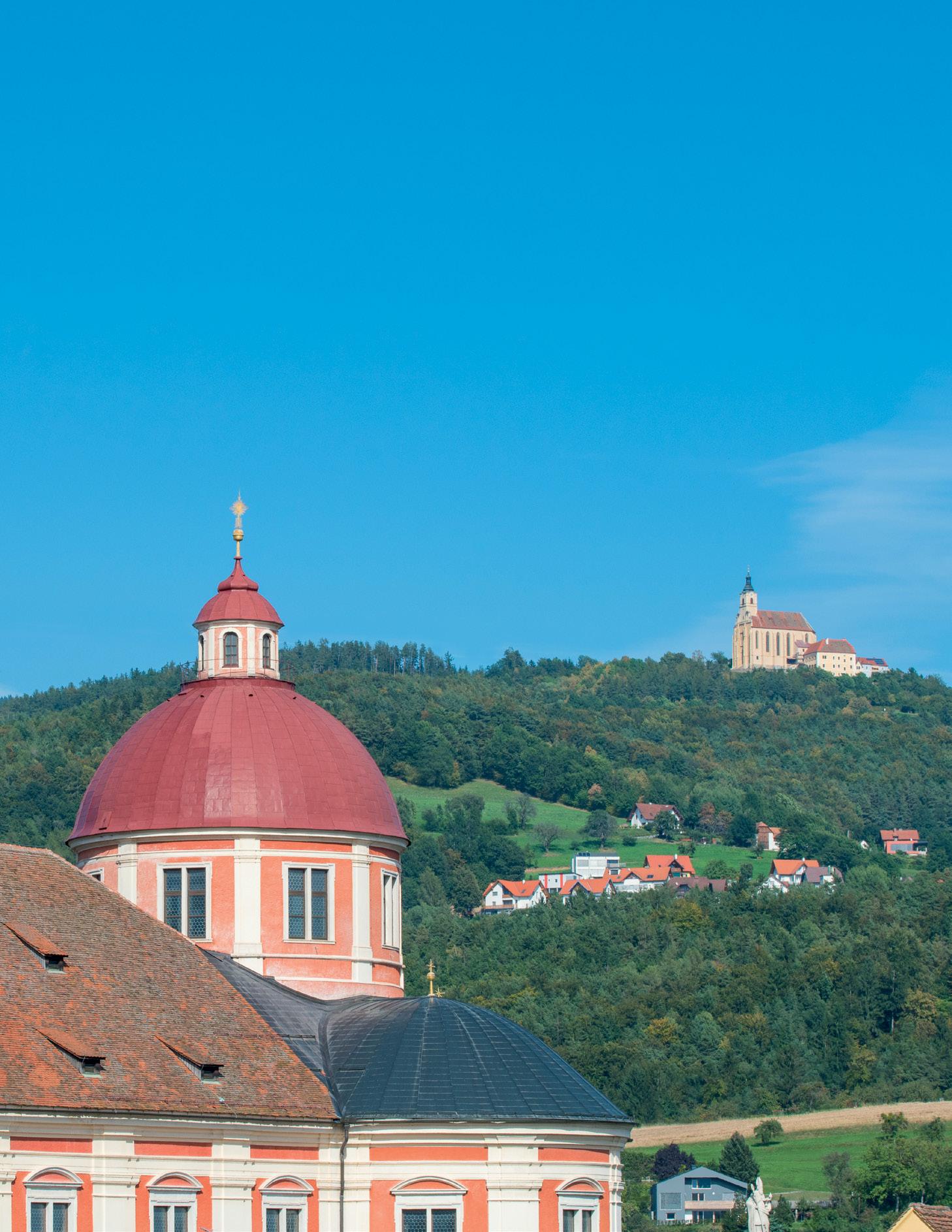
Adventure Region Eastern Styria
The Garden of Austria
Eastern Styria is a tourism region which stands for diversity, tradition and soft tourism. It has long been the holiday destination for exhausted city dwellers, who are looking for a bit of peace and quiet in the countryside. Eastern Styria offers a unique combination of sightseeing, sports activities, tranquillity and relaxation as well as natural foods and culinary inventiveness for guests and visitors. The Celts, the Romans as well as invaders from the east have left their traces and thereby helped to form the unique culture of Eastern Styria. That is why Eastern Styria is steeped in history and has many castles, churches and historic town centres for interested visitors to discover.
Eastern Styria is the Garden of Austria and convinces with a mild climate, alpine pastures, gentle rolling hills, valleys, meadow orchards, lakes, parks and vineyards. The unique landscape and outstanding natural beauty of the region is why the Garden of Austria boasts two nature parks, the Nature Park Pöllau Valley and the Nature Park Almenland. The diversity in Eastern Styria is unique: the spectrum of leisure activities ranges from summit hikes in the Almenland, a visit to the zoo in the ApfelLand, a guided tour of the towns Hartberg, Weiz or Gleisdorf, to a scenic bike tour in the Nature Park Pöllau Valley and the Wechselland, skiing in the Joglland or a tasting of regional delicacies in St. Ruprecht an der Raab.
The four gardens of Eastern Styria
Experience the diversity of Eastern Styria
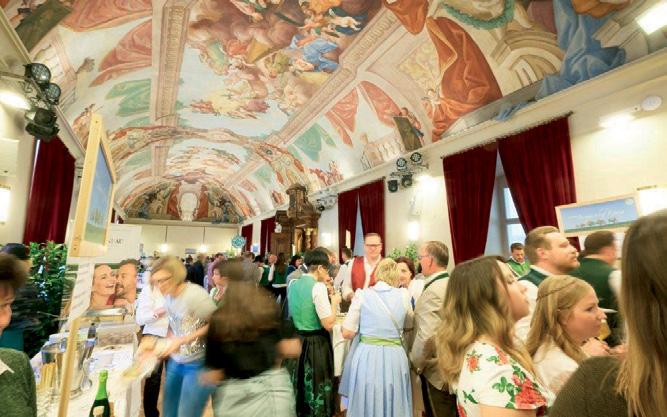
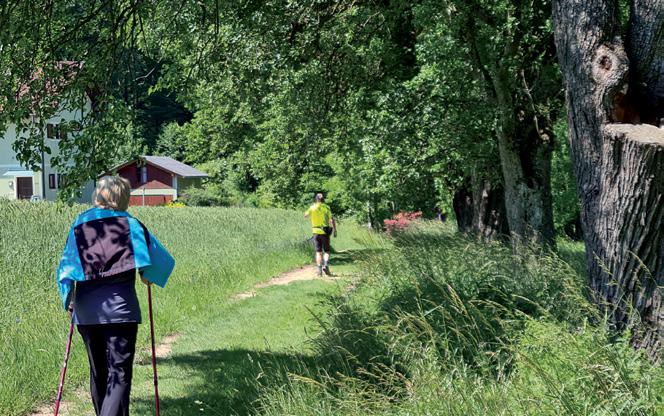
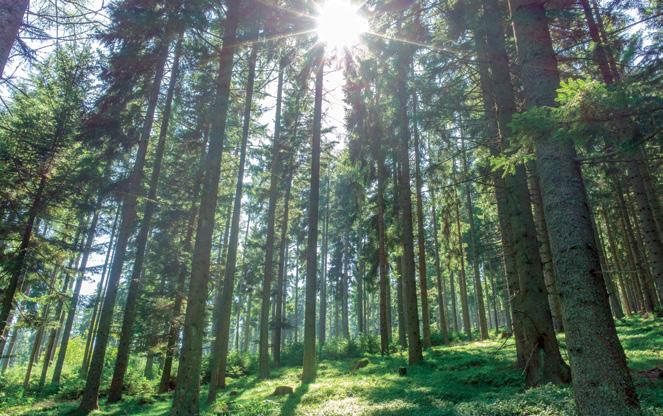
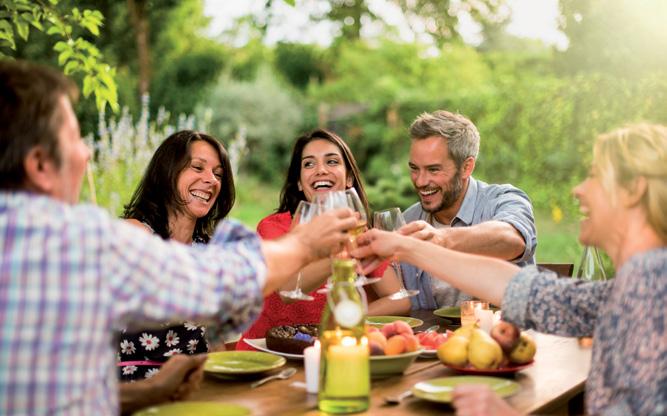
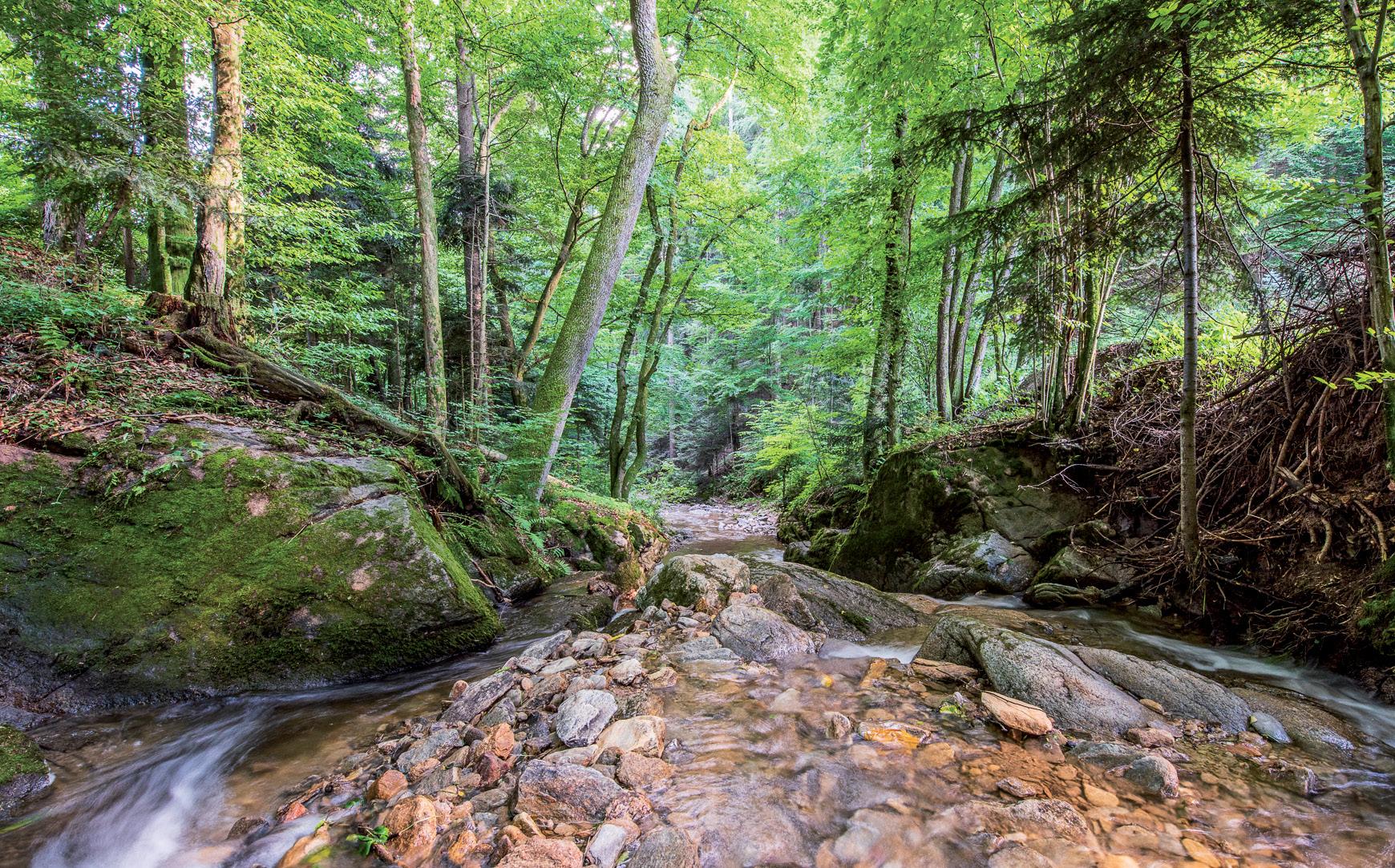
The Garden of Culinary Delights – visitors can look forward to a plethora of delicious culinary creations, handmade cakes and sweets, traditional cuisine and dishes with a modern twist, organic and regional sourced food, a close connection between producers and restaurants as well as countless awarded establishments and products.
The Garden of Motion – Keeping fit is not difficult in the Garden of Austria. The close connection of the people of Eastern Styria with nature is reflected in the many different hiking and cycling routes. Many of our hotels offer sportive activities such as Yoga or disc golf. You will find the right activity for your level of fitness which you can either enjoy alone or with one of our guides or trainers.
The Garden of Tranquillity & Inspiration –What better way to forget about the stresses of everyday life than to turn inward. Whether you just want to enjoy the healing benefits of nature or indulge yourself with a massage or beauty treatment, we have the best option for you.
The Garden of Culture – Eastern Styria can look back to a rich history which many dedicated historians and volunteers have preserved for future generations and visitors. Local artists also contribute to the diversity of cultural life in Eastern Styria. Join a guided tour, visit one of our museums, enjoy a concert on an historic organ or have fun attending a modern art exhibition.
Holidaying in the Nature Park Pöllau Valley
arrive, let go, enjoy, stay
A short time-out, a relaxing weeklong vacation, holidays with friends, a culinary tour or several weeks of quality time with your family – welcoming hosts and the region’s stunning natural landscape offer a unique holiday experience throughout the year.
Choose from a wide variety of holiday accommodations - 4-Star-Superior-Hotels, Bed & Breakfasts, private rooms, inns, holiday apartments and houses or holidays on a farm. We have the perfect accommodation for all your requirements and preferences.
We, our hosts, our guides, the two municipalities Pöllau and Pöllauberg and many of our local businesses are dedicated to ensuring that you get to enjoy a wonderful holiday. Hospitality is not just a word to us!
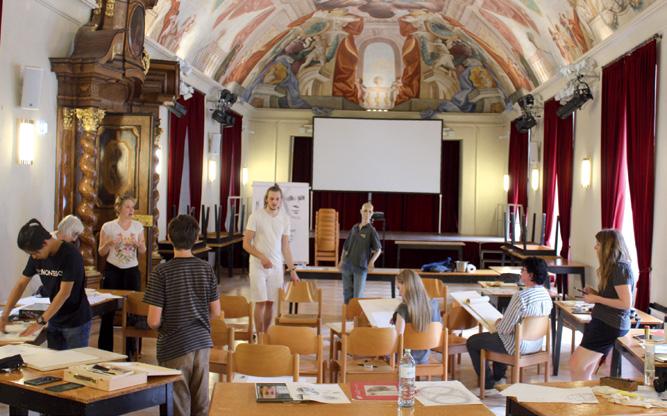
Relaxation & Health
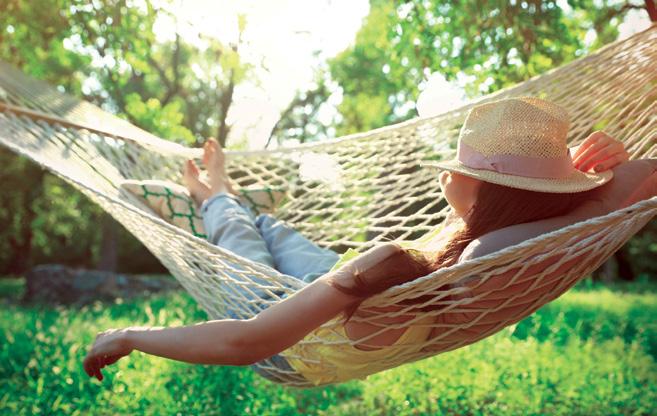
We, the team in the tourism office, are happy to personally assist you with planning your vacation or your group travel project, we happily inform you about guided tours, sports activities, hiking or cycling trails, tastings, workshops and events. Comprehensive brochures and detailed maps can be obtained in our office. You can find us in the Pöllau castle right next to the main entrance of the church.
Nature Park Partners
Our Nature Park partners are certified businesses offering regional and seasonal Nature Park specialities, authentic lodging in Nature Park rooms, detailed information about our region’s nature, culture, history and much more.
The stunning scenery of the Nature Park alone helps to anchor you back into your body and to clear the mind. Many of our hosts offer healthful and wholesome foods as well as treatments that contribute to your overall health and wellbeing.
Cuisine & Culinary Pleasures
In the Nature Park Pöllau Valley you find a treasure trove of regional products from local businesses. Many of our hotels, restaurants and producers work closely together to tease your taste buds
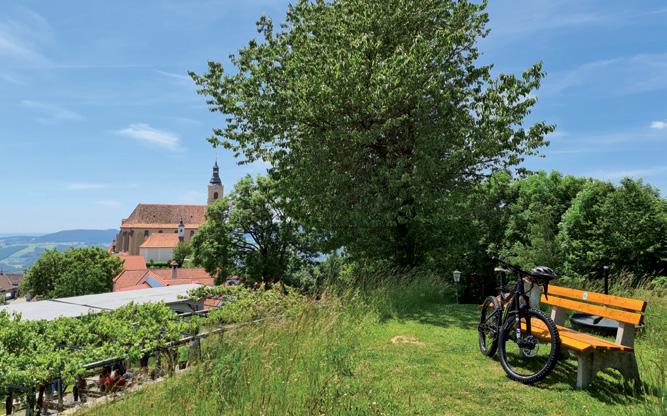
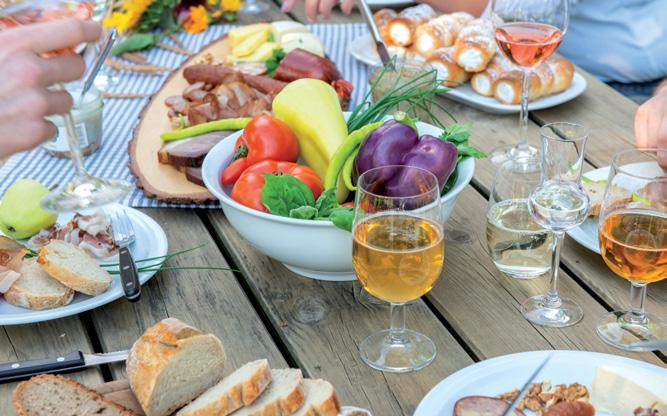
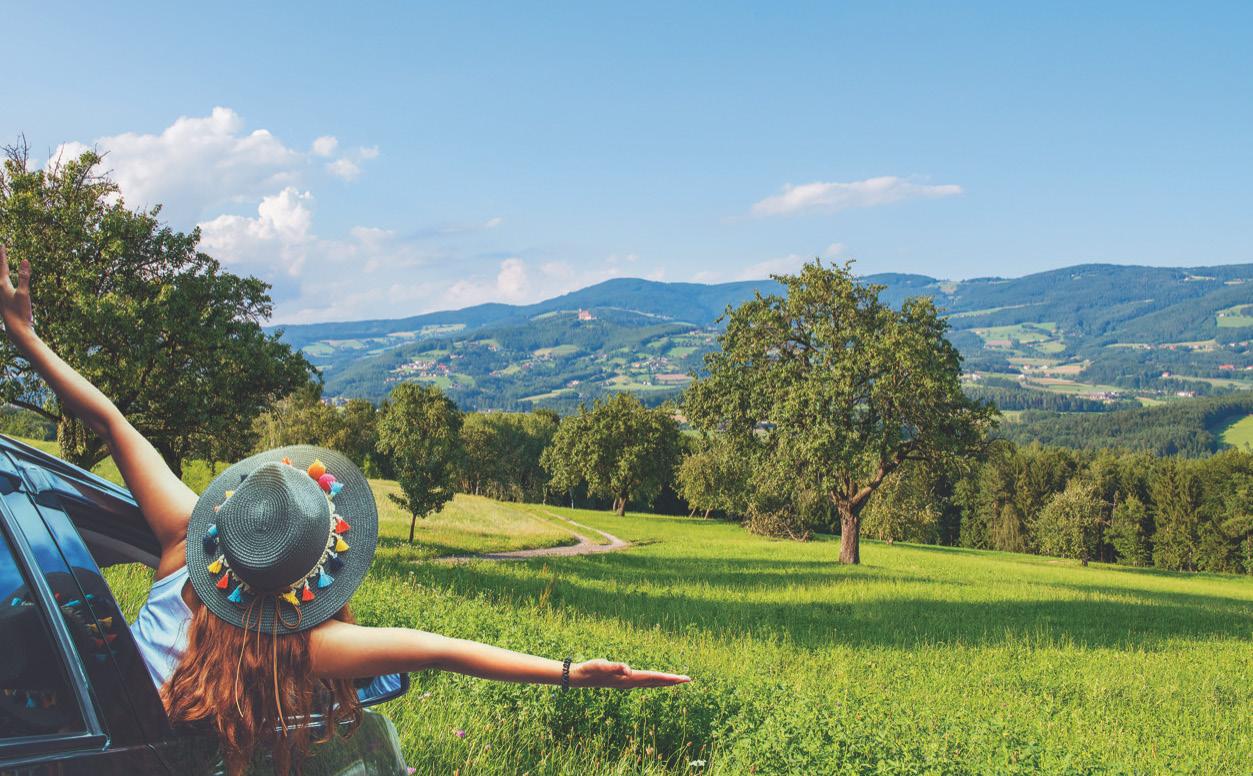
with culinary novelties as well as authentic traditional dishes.
Culture & History
The Nature Park Pöllau Valley is not only home to the most significant church building of the Late Middle Ages in northern East Styria, the pilgrimage church Pöllauberg, which is also one of the main works of the Styrian High Gothic period, but also to the “Styrian St. Peter’s Basilica”.
Nature & Fitness
Physical activity in nature is not only one of the best ways to experience the world with all your senses but it also boosts your immune system, improves your mood, reduces stress and has many health benefits. So, Go Green!
We take care of you body, mind & spirit!
Active in Nature
Hiking in the Nature Park Pöllau Valley
Pilgrimage Route Pöllau – Pöllauberg
This route is not only the old pilgrims’ way but also part of the Hirschbirn hike. Starting at the parish church Pöllau you hike to the roundabout, where you find north of the Raiffeisenbank the hiking route 942 towards the church of the sacred heart (Kalvarienbergkirche) which was built in 1699. Continue over the Goldsberg to the Marian pilgrimage church Pöllauberg.
Nature Park Adventure Route
Starting in the castle Park you follow the sings “Naturpark-Erlebnisrunde” with a yellow point. In the Hinterbrühl you walk along a little stream and there’s even a playground for children as well as a barbeque station, which is why this trail is especially popular with families. From the natural swimming pond of the Hotel Restaurant Gruber you walk towards Rabenwald past the bee education trail and then back to Pöllau.
Nature Experiences
Cycling in the Nature Park Pöllau Valley
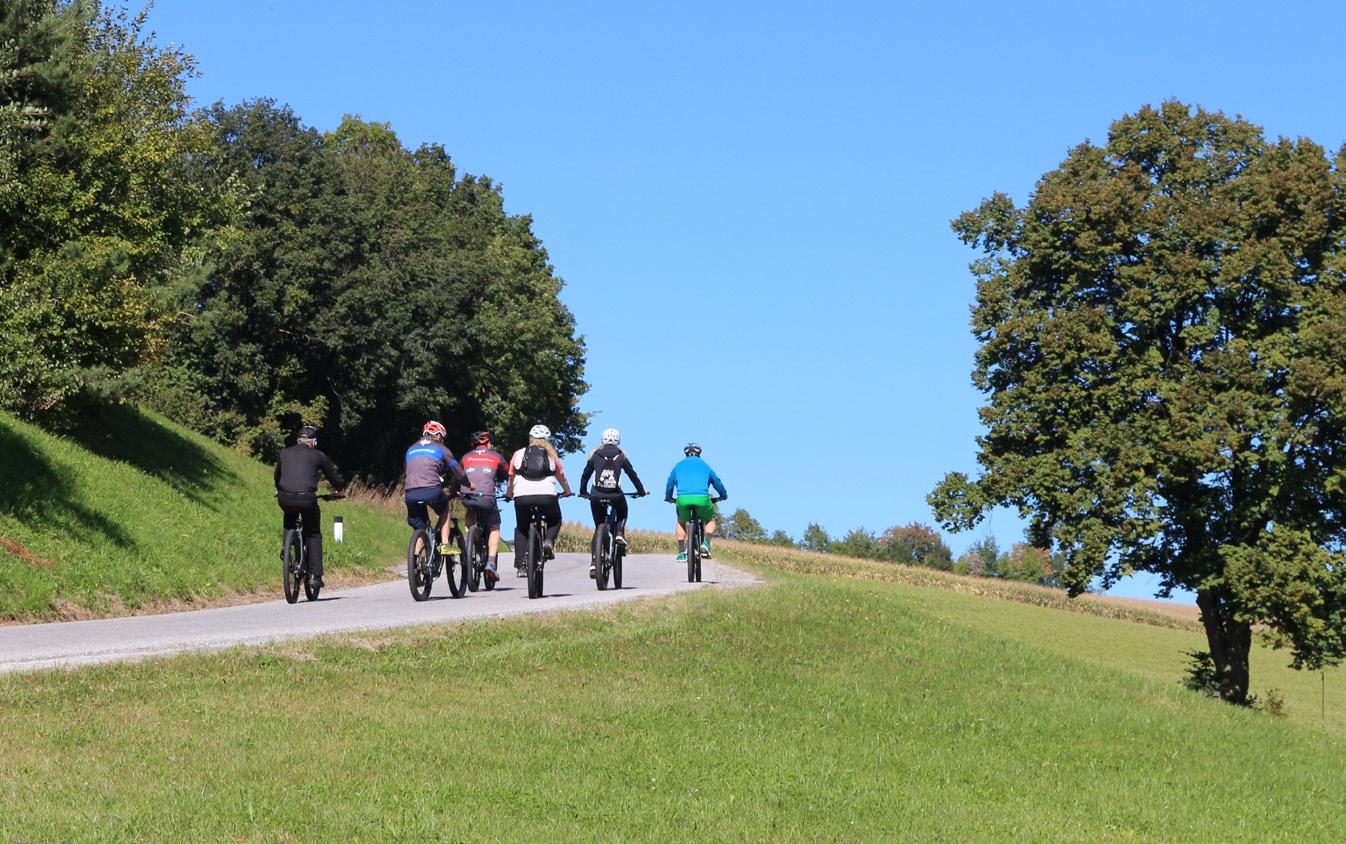
Flora Tour, Pöllau – Pöllauberg
Here you get to enjoy the floral splendour of Pöllau and Pöllauberg during the warm months of the year. The route starts on the main square of Pöllau by the entrance to the castle. Follow the signs R57 towards Stubenberg/Pöllauberg and cycle past the confectionery Ebner. In Winzendorf at the road junction „Söldnerdorf/St.Anna“ and. „Oberneuberg/Pöllauberg“ keep to the left and follow the sinage „Flora Runde“ towards Pöllauberg.
Country & Town Tour, Hartberg – Pöllau
This route connects two special places – Pöllau with its „Styrian St. Peter’s Basilica“ and Hartberg with its historic town center. The tour starts on the main square of Pöllau by the entrance to the castle. Follow the signs R57 towards Hartberg. Through the town park in Hartberg you reach the castle in Hartberg. You can either cycle back to Pöllau on the same route or change to the HB26 in Löffelbach and cycle to the church St. Anne atop Masenberg to enjoy the stunning views. In Flattendorf you switch to the R57 and continue on your way back to Pöllau.
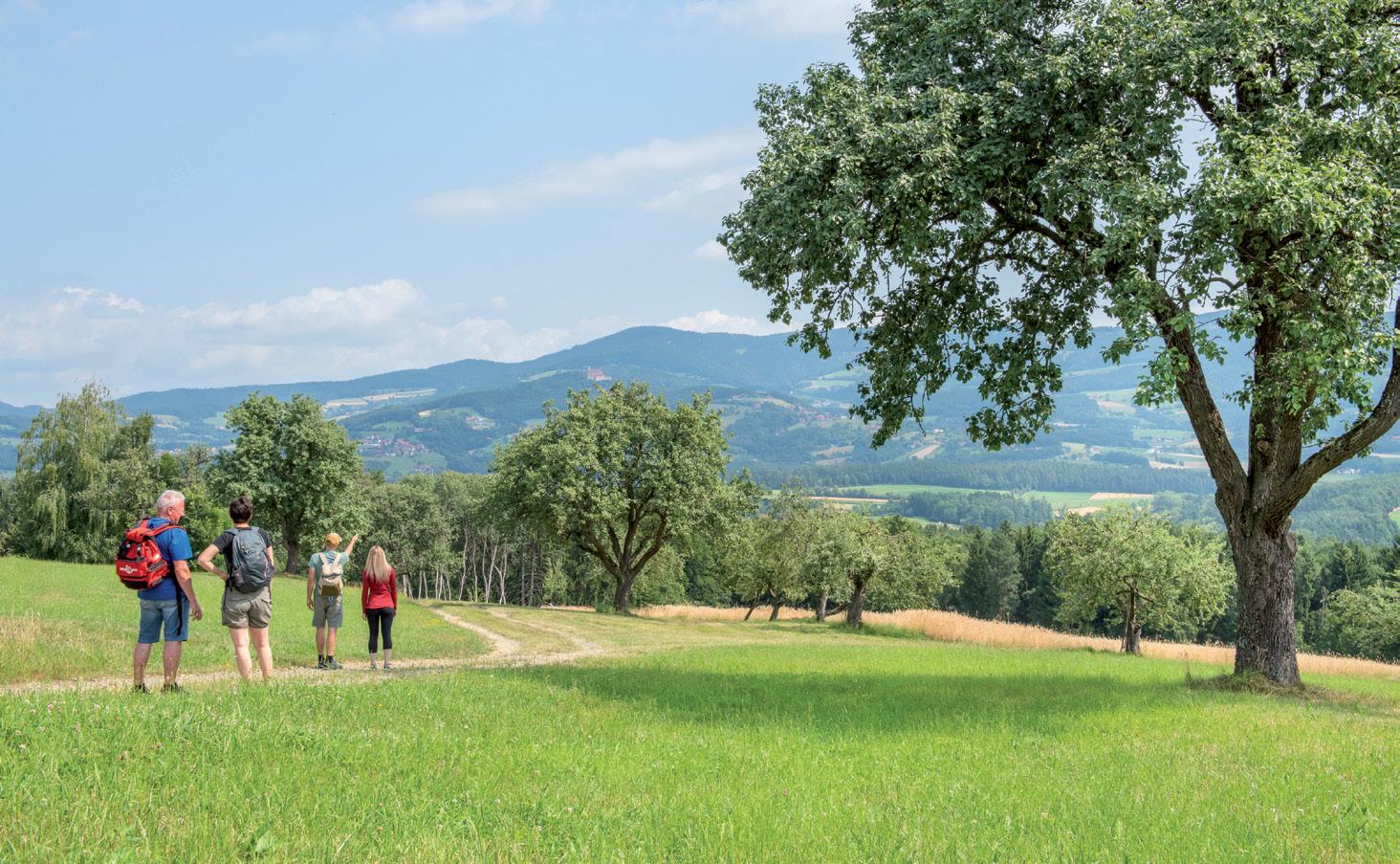
Length: 3.1 km
Duration: 1.5 hrs




Elevation gain: 340 m
Elevation loss: 10 m
Length: 7.9 km
Duration: 2.5 hrs
Elevation gain: 120 m
Elevation loss: 120 m
Length: 25.9 km
Duration: 3 hrs
Elevation gain: 500 m
Elevation loss: 500 m
Length: 41.4 km
Duration: 4.5 hrs
Elevation gain: 435 m
Elevation loss: 435 m
Nature Park Pöllau Valley
so much to experience, so much to enjoy
The diverse landscape of the Pöllau Valley is a patchwork of forests, meadows, fields, and orchards dotted about on soft hills. The plain of the valley at its lowest point is 345 meters above sea level and rises to 1,280 m above sea level at its highest point.
Pöllau was awarded the title of Nature Park in 1983 because of its outstanding natural beauty. The Nature Park Pöllau Valley strives to protect nature via the strategy “protection through utilization”, meaning that humans should benefit from nature but in a circumspect and sustainable way. The biodiversity of the landscape must be preserved.
The traditional and careful farming of the land and the way traditions and customs have been kept alive in the region are important factors for living in tune with nature. With the title, the region commits itself to being an example for the development of sustainability, conservation and environmental protection. Recreation, education and regional development are also indispensable tools to achieve this.
What is a Nature Park?
Austrian Nature Parks distinguish themselves through a characteristic, ecological and valuable cultural landscape. They stand for a symbiosis between plant life, animals and humans. This reflects the natural cycle of nature and is the basis for a healthy way of living together.
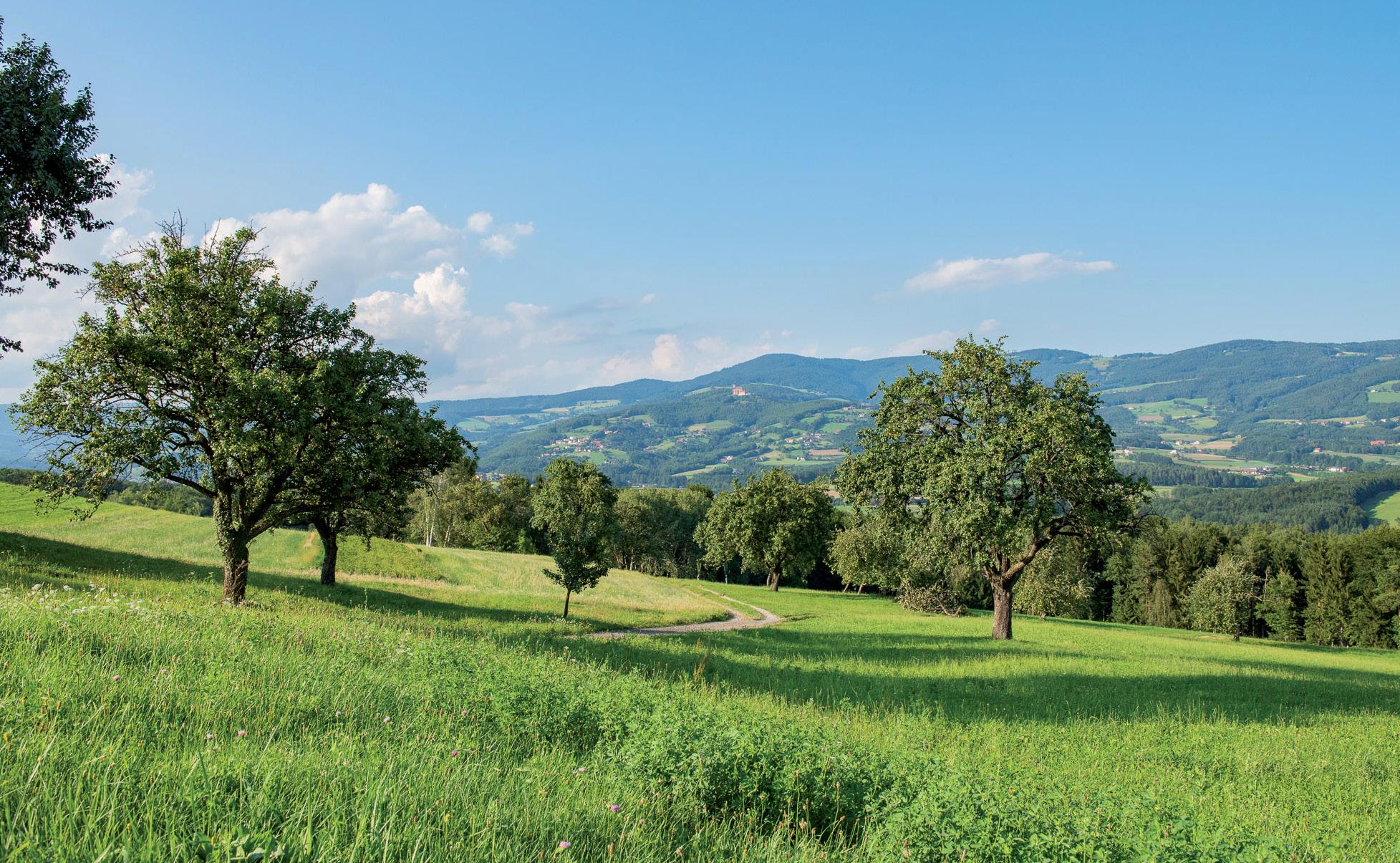
Pöllauer Hirschbirne
Autumn Pear
The Nature Park Pöllau Valley is home to the Hirschbirne, the autumn pear. The Hirschbirne is an old Styrian variety of pear. The name derives from the word “Herbst” ( “Hiascht”), which means autumn, because the pear is harvested mid-October.
It is not only the pride of Pöllau’s cuisine, but the knobbly trees with their magnificent crowns – planted in groves or scattered throughout orchards – are also a key characteristic oft he valley’s stunning landscape.
The Hirschbirn trees bloom at the beginning of May. The little white flowers with their carmine red stamens are a popular photo motif for visitors.
The trees can grow up to 16 meters high and up to 200 years old. The pear itself has a roundish shape and is incorporated in many a Nature Park Pöllau Valley speciality.
Among the products created from the autumn pear are dried fruit, pear juice, pear spirits, pear vinegar, pear cider, pear jellies, pear liver pate, “Hirschbirn” liver meat loaf and much more.
In May 2015 the geographical origin of Pöllau’s Hirschbirne was declared protected by the European Union.
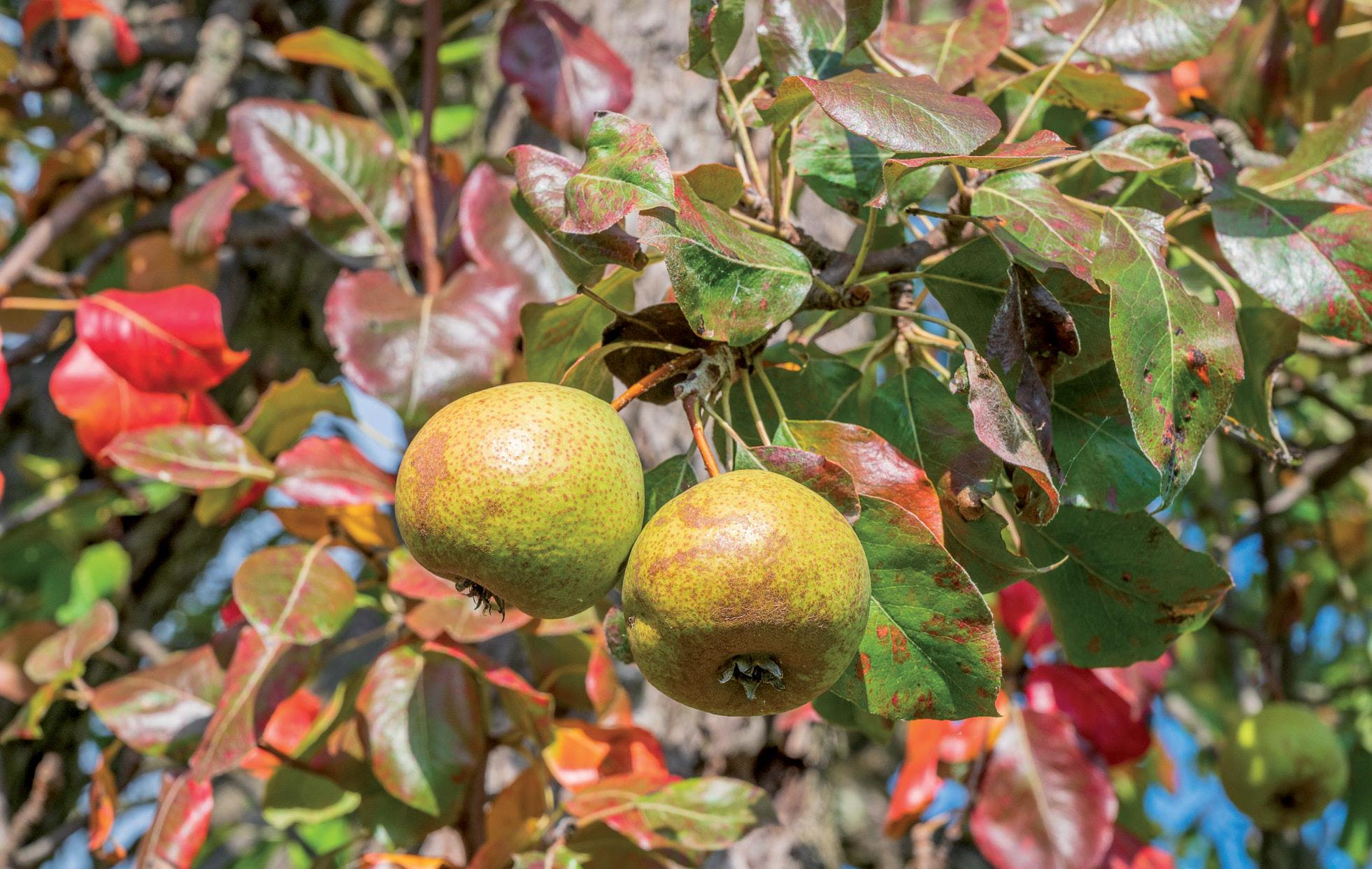
The History of Pöllau
Learn more about the market town Pöllau
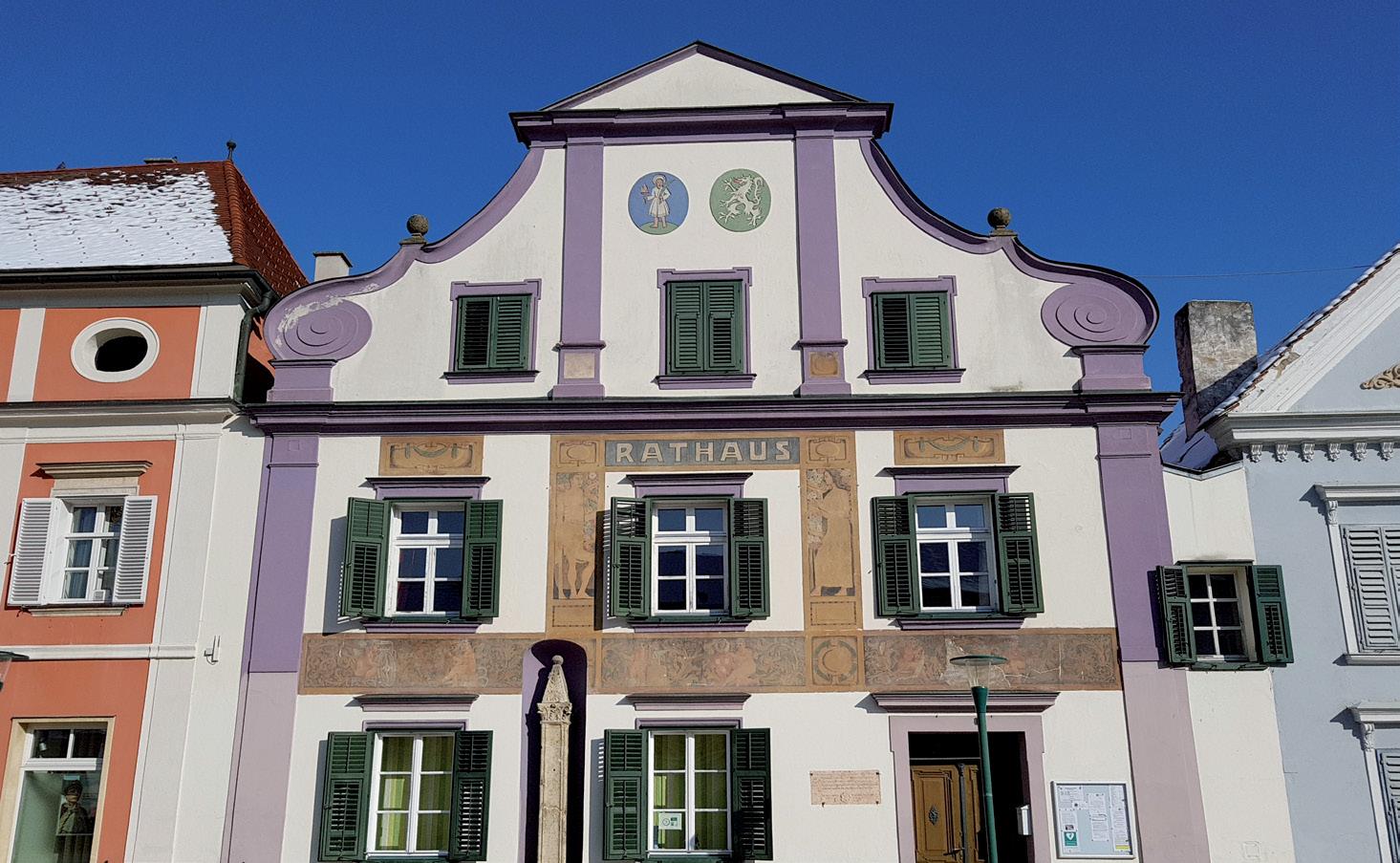
Nearly 2000 years ago the Romans left their traces in Pöllau as tombstones from that time prove. A Roman funerary monument depicting a lion sits atop the balustrade of the music school in the Pöllau Castle and watches over the pupils.
During the Middle Ages the ruling dynasty of the region were the Lords of Stubenberg, who were three hundred years later replaced by the Lords of Neuberg. The last Lord of Neuberg remained childless and therefore determined in his last will that the castle should be converted into a monastery for the Augustinian canons. In 1504 the first monks came to Pöllau from the monastery of Vorau.
There is little known about the market rights of Pöllau before the monastery was built, but Pöllau probably already had the right to hold a regular market by 1283. The advantageous geographical location, the pilgrimages to Pöllauberg, different trades and the market were all important economic factors for Pöllau.
Historically, textile workshops were a very important local industry. The oldest and most important cloth manufacturer guild in the district of Hartberg was the one in Pöllau. The soft water in Pöllau was ideal for washing wool. By the end of the 19th century the trade of cloth making declined in Pöllau due to the industrial revolution and the fact that Pöllau was not connected to the rail network.
The Augustinian Monastery
An impressive undertaking for a small place like Pöllau
On the site of the monastery used to be a water-castle and a parish church in the 12th century. In 1680 the medieval castle and the former church, located somewhat north of the present-day church, still existed.
Through the entry of numerous aristocratic canons, the monastery of Pöllau experienced a boost. Owing to generous donations, Provost Michael Maister commissioned substantial reconstruction works.
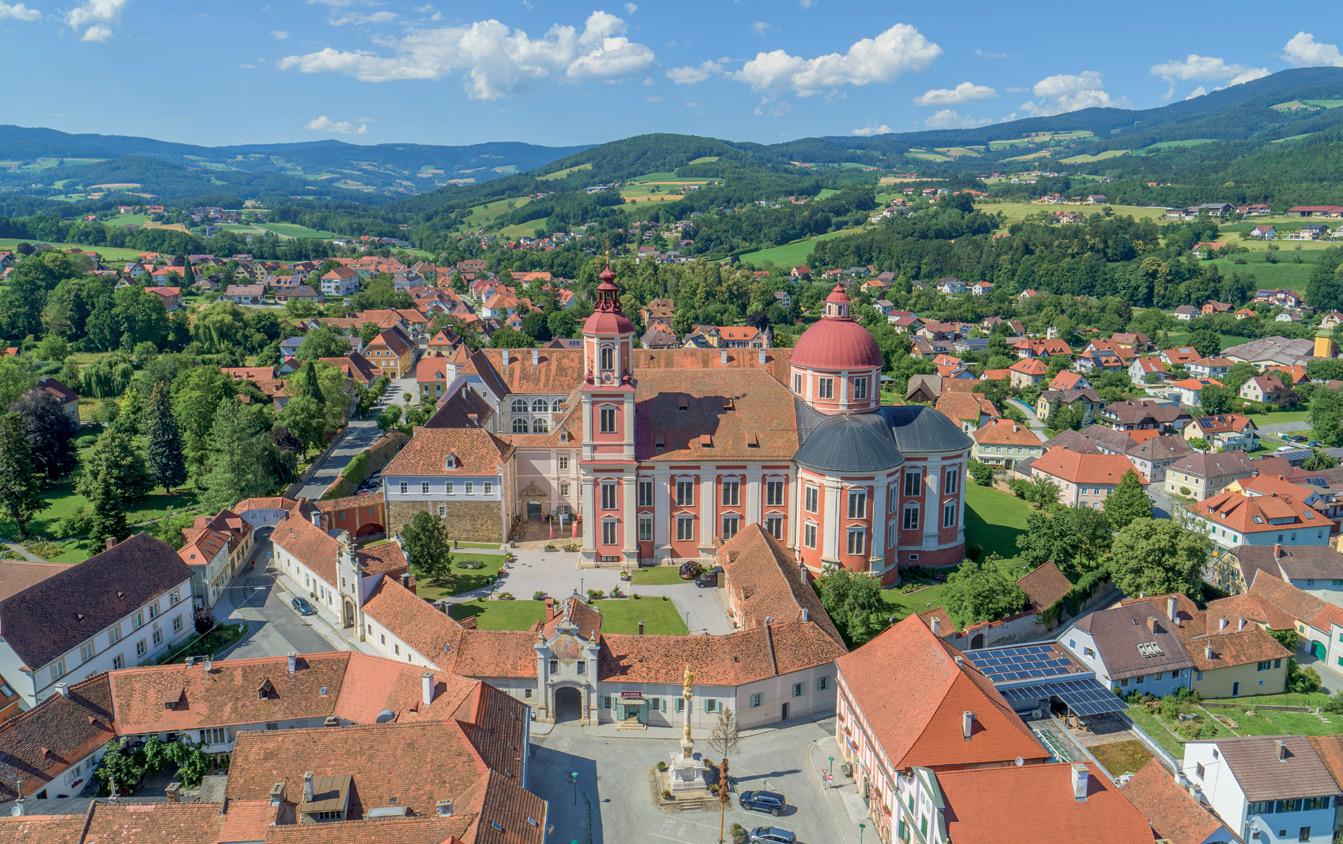
The first construction plan from 1680, based on the Cathedral of Salzburg, might have been conceived by Domenico Sciassia, a master builder from the Early Baroque period. In 1701 the building contract, though, was awarded to Joachim
Carlone, who is responsible for the trefoil layout. The church was built in several stages between 1701 and 1723.
The monastery without the church was completed in 1700 under Provost Ernst of Ortenhofen with active support from the population. The framework of the church was finished ten years later.
The Augustinian canons only lived in the monastery for a short period of time as Emperor Joseph II., a son of Empress Maria Theresia, closed hundreds of monastic institutions in Austria on his quest to modernise the Catholic Church. The monastery in Pöllau fell victim to the Josephinist Reform in 1785.
Styrian St. Peter’s Basilica the parish and former monastery church
The so-called “Styrian St. Peter’s Basilica” is an impressive landmark that can be seen from virtually everywhere in Pöllau due to its mighty 42-meter-high dome and its 53-meter-high tower. It is one of the most important Baroque church buildings in Styria as well as the eighth largest despite only having a third of the length of the famous St. Peter’s Basilica. Even though the west façade and the second bell tower couldn’t be finished, remarkable results were achieved here in Pöllau, especially, with the means at hand.
Matthias von Görz was chosen at a young age to be the creator of the entire frescoes and primed for this task, he only used illusionistic paintings to create the impression of grandeur and three-dimensional space as well as the
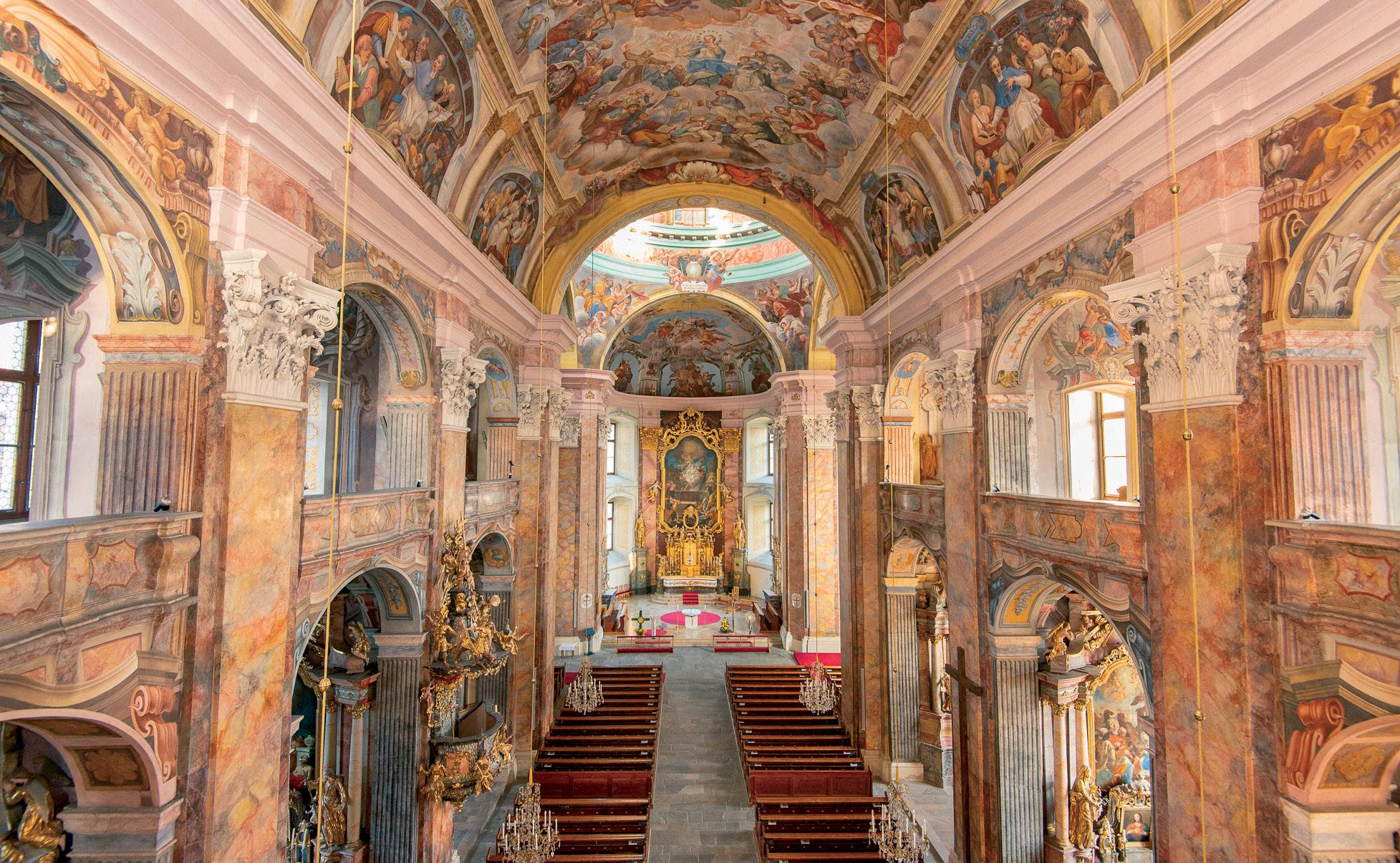
necessary architecture. Pöllau completely refrained from using stucco. The light coming in through the windows enhances the effect of the architectural design.
The ceiling frescoes invariably draw the eyes upwards. The ceiling of the nave is one big work of art without any form of compartmentalization. The central theme is the worship of the apocalyptic lamb through angels and saints of the Old and New Testament and the worship and exaltation of the Holy Cross. The dome with its eightfold echo, with the four evangelists and with the vast heavenly vault as well as countless angels is also one big work of art. The centrepiece of the high altar depicts the patron saint of the church, Saint Vitus, by Johann Adam von Mölck from 1779.
Parks & Gardens in Pöllau
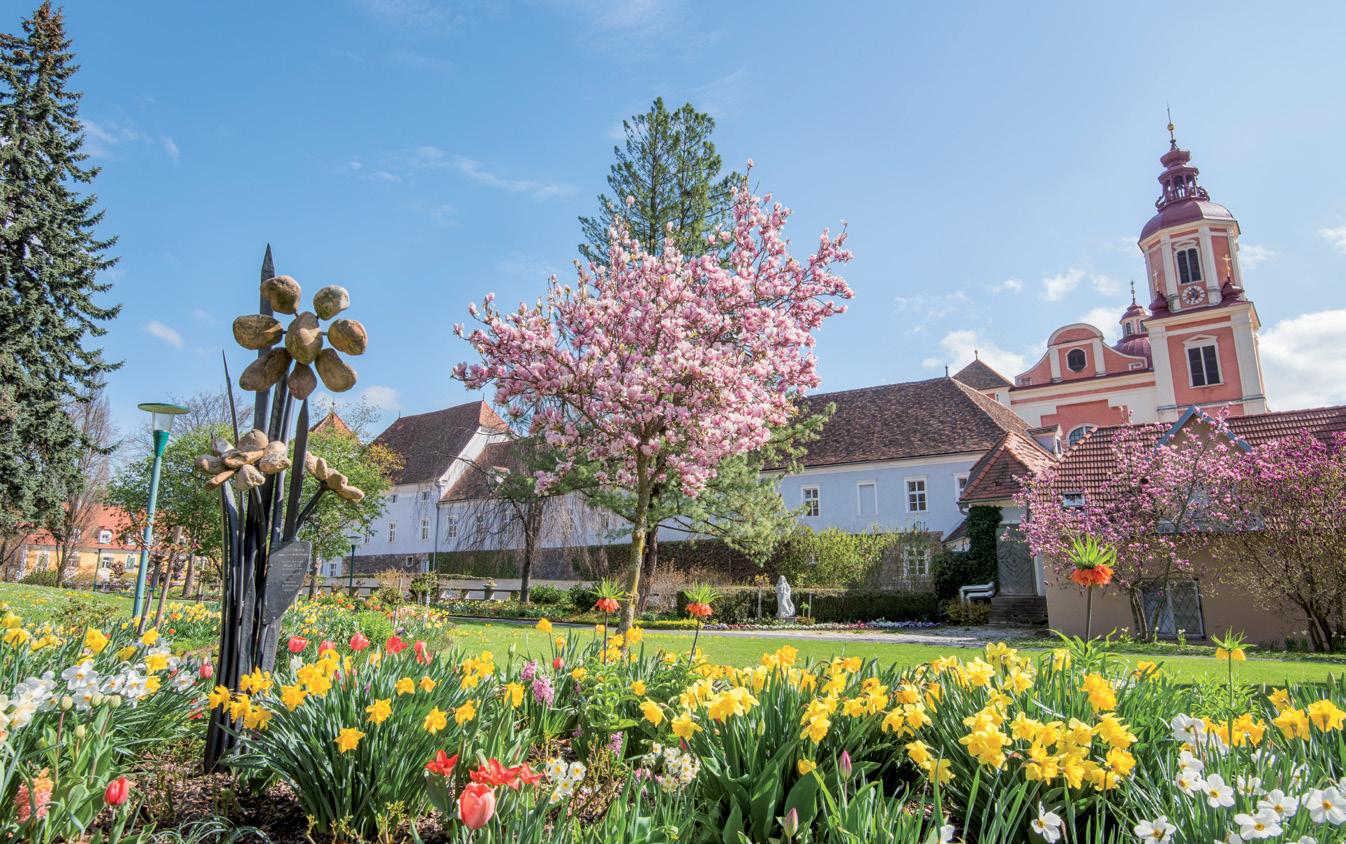
Green recreation & floral splendour
Castle Park Pöllau
The castle park Pöllau used to be a place of meditation and contemplation for the Augustinian Canons and was connected to the monastery via a passage. Nowadays, it still is a place of recreation. There’s a playground for children and a café. Almost all year round the floral opulence will indulge your senses. The open-air classroom and the root display box are used for education. Many of our hiking routes start here and it is also the scenery for many a local feast.
Aupark Pöllau
In 1900 the “Beautification Club” set about to lay the foundation for touristic ventures and created the Aupark. Back in the day, tourists could enjoy a boat ride on the pond. The new public swimming pool also helped to establish Pöllau as a modern holiday destination. Although only ducks get to enjoy the pond now, the park is still a wonderful place to visit.
Tip: Alpine Herbal Garden Käfer – In this private garden you can learn more about herbs and healing plants. It is also the starting point for the Herbal Path of the Senses.
The pilgrimage church Pöllauberg
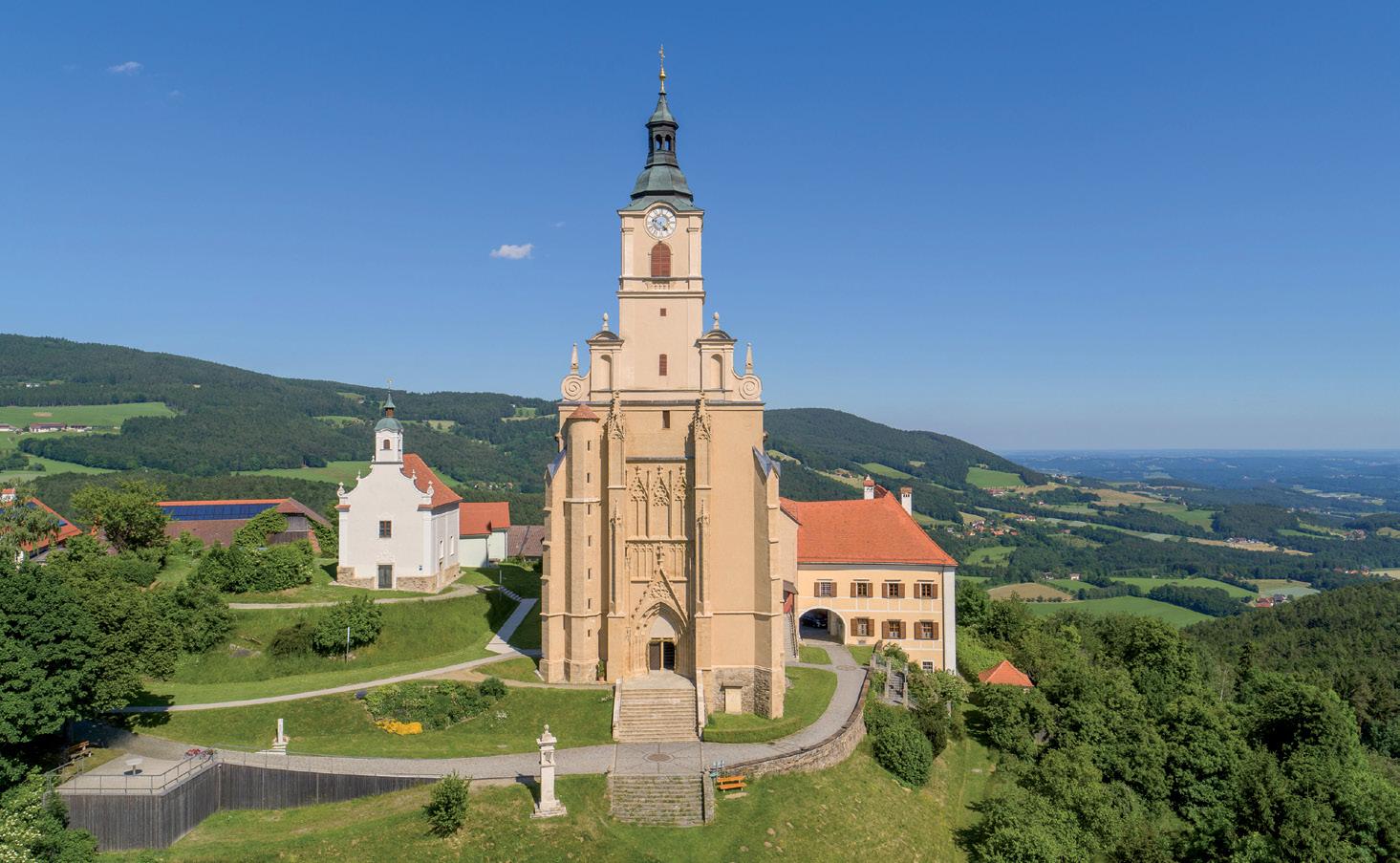
Enjoy the stunning views
The parish and pilgrimage church Pöllauberg is one of the main works of the Central European High Gothic period. For the year 1375 the endowment of a chaplaincy is recorded and in 1384 the endowment of glass windows is mentioned. Both dates imply that there must have been a church building. The construction probably was started at the beginning of the 14th century.
The church has a strange layout as the double-span nave changes into the older triple-span choir. The apse has the shape of a 5/8 polygon which facilitates a choir ambulatory with seating niches. Only where the change from the double-span to a triple-span ceiling happens and where the diagonal walls with two windows are located a sexpartite rib vault is employed.
The music gallery, built in 1691 and decorated with stucco by Joseph Serenio as well as paintings by Antonio Maderni, houses the Early Baroque organ. With 18 stops over two manuals and the pedal it is considered a grand organ taking into account the time of creation. In 2019 it was restored and returned to the state of 1740.
The previous bell tower was replaced with a new Early Baroque construction in 1678. The cupola of the tower in its current form was added in 1744 and in 1872. There are four bells in the tower.
Pilgrimages to Pöllauberg
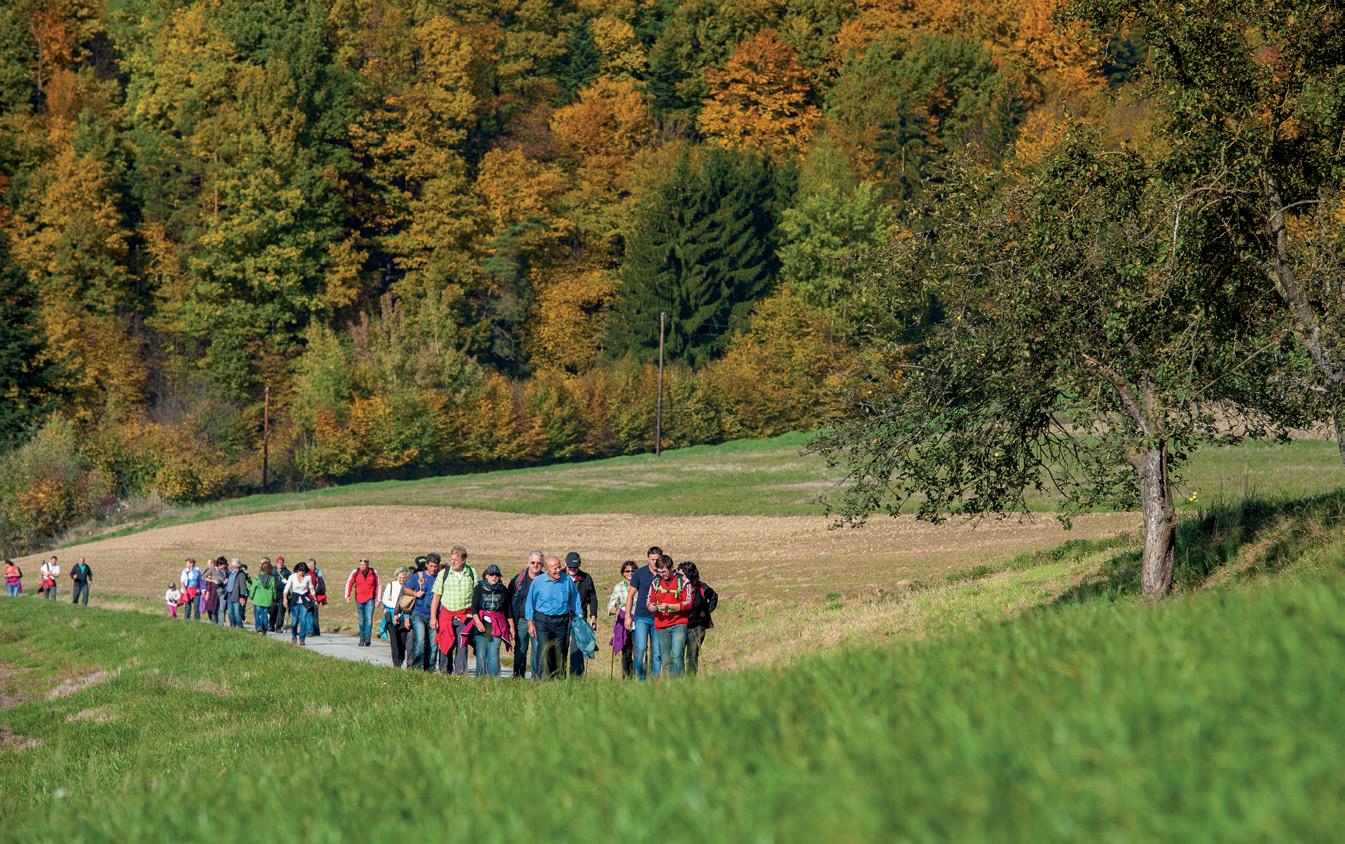
A catharsis for body & mind
As there was no resident chaplain in the church Pöllauberg until 1377, the time of the great pilgrimages only started in the 15th century. Letters of indulgence between 1415 and 1477 enforced the influx of pilgrims from all over Eastern Styria. Preferred times for pilgrimages were especially Saturdays during the summertime, which included a lively selling of drinks all around the church.
After the decline of pilgrimages during the Reformation period, they strongly increased again during the 17th century. From 1635 onwards the church consecration festival became one of the main days of pilgrimages of the year. Even pilgrims from western Hungary came to Pöllauberg. On these special pilgrimage days there always were a lot of stalls around the church where local and foreign marketers sold their
wares as well as food and drinks. Pilgrimages declined markedly during the late 18th century (Josephinism).
Since 1504 the Augustinian Canons from Pöllau looked after the pilgrimage site Pöllauberg. The abolition of the Augustinian monastery in Pöllau in 1785 ended this prolific alliance. Many votive paintings from the 19th century have been preserved in the pilgrimage church and indicate that there must have been a large inpouring of pilgrims. The masses of pilgrims of the Baroque period could never be surpassed, however. After the Second World War the numbers of pilgrims increased again. In 1950 there were more than 100 processions. The construction of the road from Pöllau to Pöllauberg also helped to strongly increase the numbers of pilgrims and tourists again.
Anna Chapel Pöllauberg
A small sacral treasure
At the highest point, just above the pilgrimage church, stands the Anna chapel. It is a small Baroque building from around 1730, although the original construction probably dates back to the Late Middle Ages.
On the high altar from 1644 is a painting of “Anna Selbdritt”, a Christian iconographic style that depicts saint Anne with her daughter Mary and a baby Jesus.
The preserved Early Baroque altar itself is one of the oldest in the region. The large statue of Ulrich from 1673 faces an oversized side altar. The altar painting shows Catherine of Siena and Dominic receiving the rosary.
Also worth a mention are the painting of St. Donatus, the patron of weather, and the statue of St. Anthony of Padua. The Baroque chandelier from the large church also stems from the time around 1730 just like the small processional organ, which was created by Johann Georg Mitterreither.
Tip: The stone wayside shrines and the “European Trail of Reflection” along the old pilgrims’ route are also worth a visit on your way to Pöllauberg.
Parks & Gardens in Pöllauberg
Absorb some flower power
Flower Village Pöllauberg
In 1986 Pöllauberg won the accolade “Most Beautiful Flower Village in Europe” and in 1985, 2003 and 2009 “Most Beautiful Flower Village in Styria” as well as many other awards over the years.
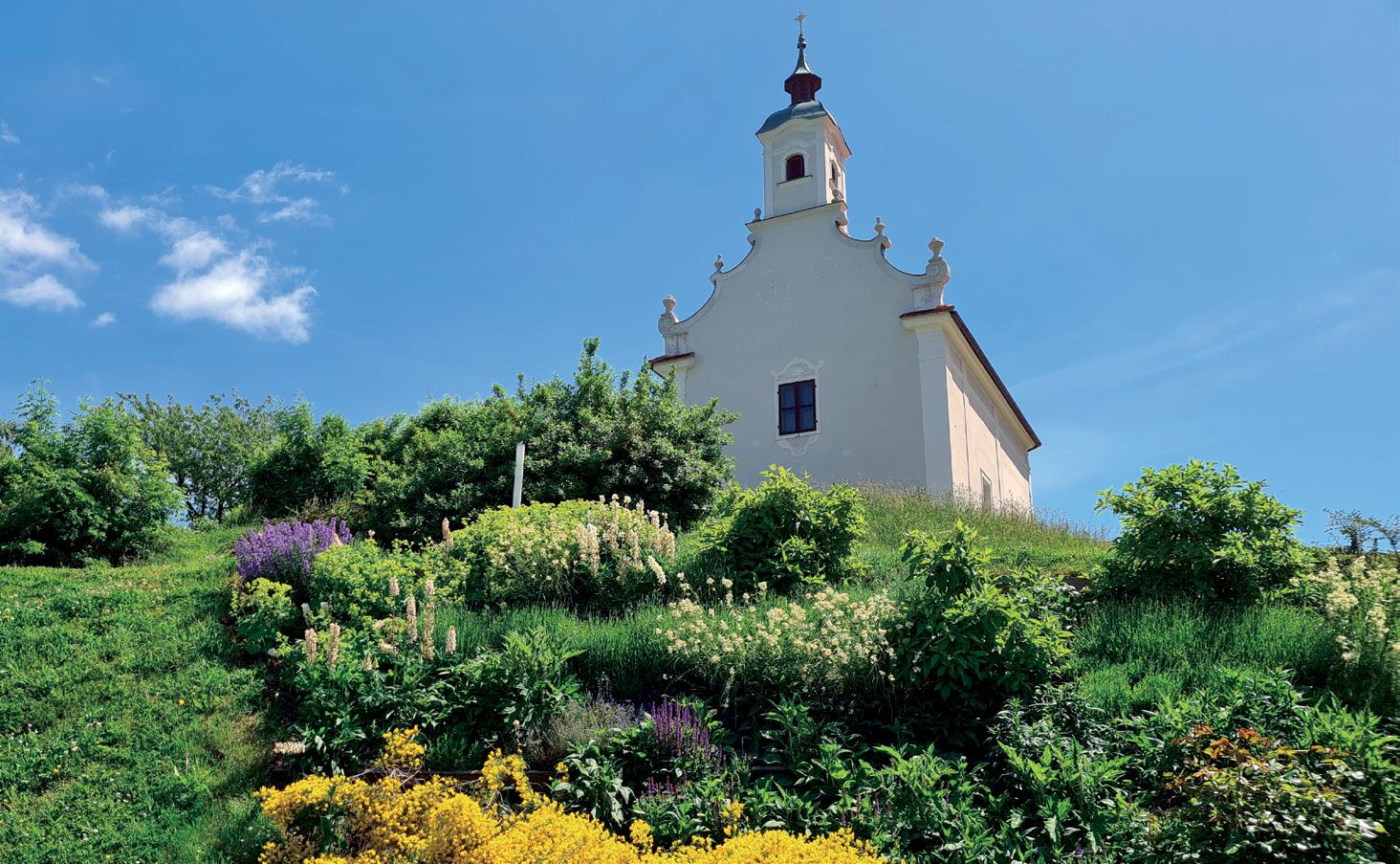
Pöllauberg is part of the “Styrian Flower Road” that connects ten places in Eastern Styria, which stand out for their flower decorations as well as their beautiful parks and gardens.
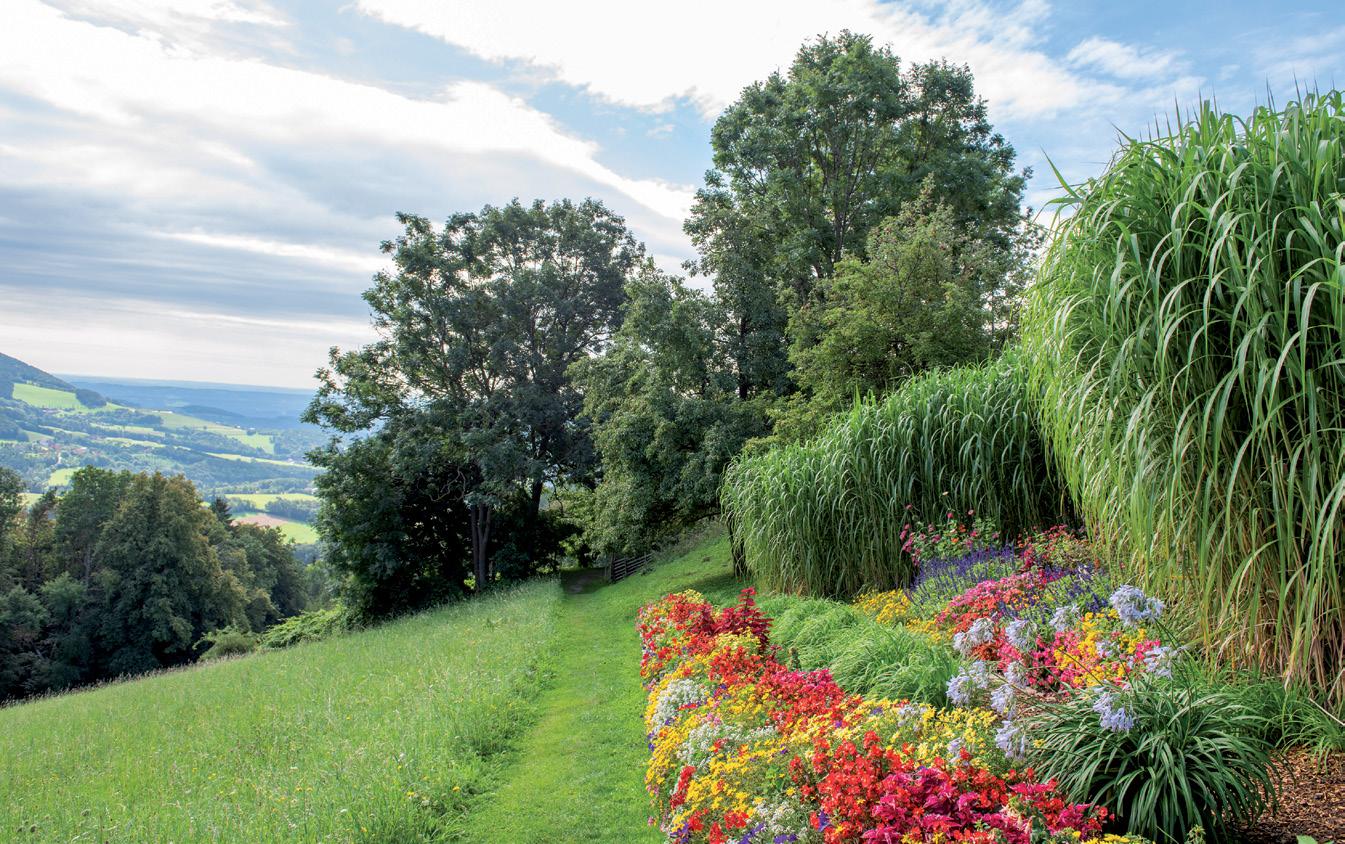
You can also visit the “Road of Victors” next to the municipal building of Pöllauberg, where you can admire the winning flowers of the preceding years.
Themed Gardens Pöllauberg
Around the pilgrimage church Pöllauberg 10 themed and freely accessible gardens were created to give visitors an insight into the culture and farming traditions of the Nature Park Pöllau Valley.
Maybe you would like to take a foray into the Schnapps Garden, the Herb Garden, the Rose Garden or the Wine Garden. The gardens are best visited between June and October for guests to enjoy the full glory of the gardens.
The best thing about Pöllauberg is, that many of its sights are easily accessible and barrier-free like the pilgrimage church and the “Road of Victors”.
Museums in the Nature Park Pöllau Valley
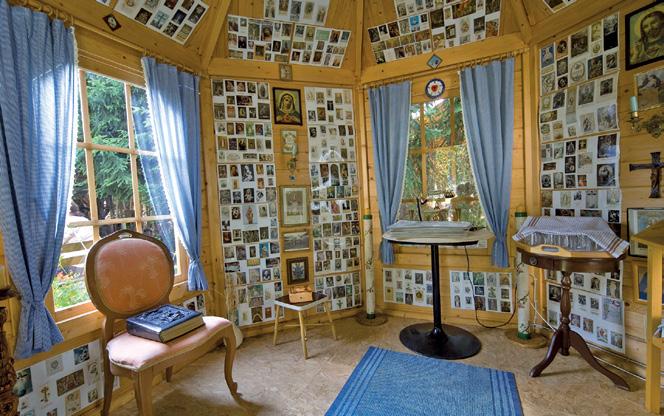
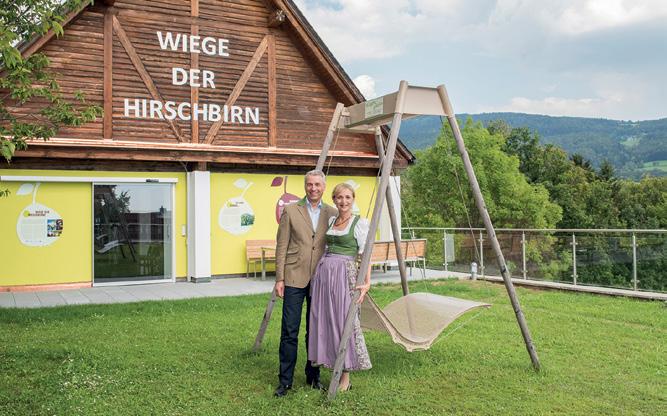
ECHOPHYSICS -
The European Centre for the History of Physics
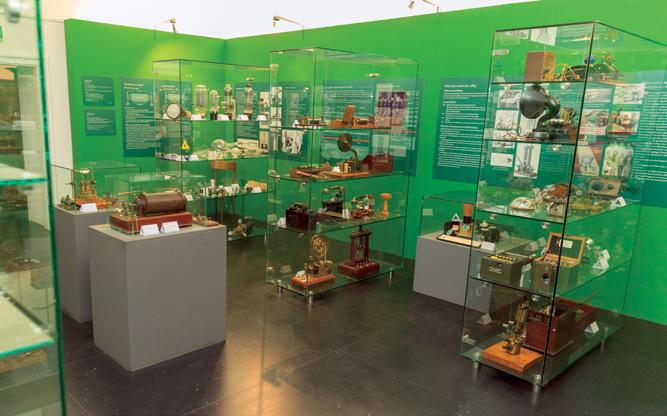
Echophysics is the first and only centre for the history of physics in Europe. Here you learn more about the considerable contributions of Austrian pioneers to modern physics. You can also find a replica of Antikythera, the first calendric and astronomic computer, as well as the estate of the only Styrian Nobel Prize winner in physics, Victor Franz Hess, who discovered cosmic radiation. The museum is located in the Pöllau castle.
Mobile: +43 690 100 158 00
www.echophysics.org
Opening Times: Thursday to Sunday from 10 am to 5 pm (November – March)
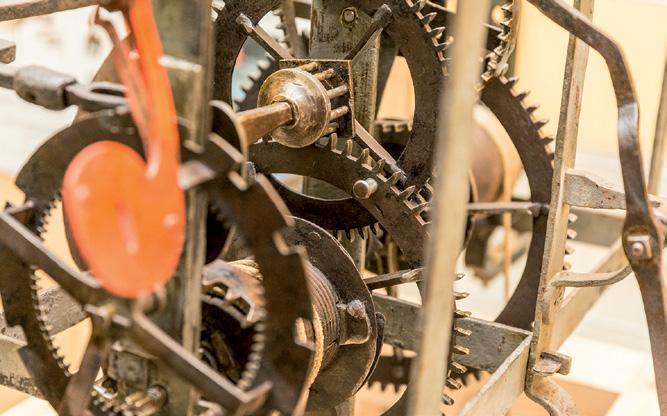
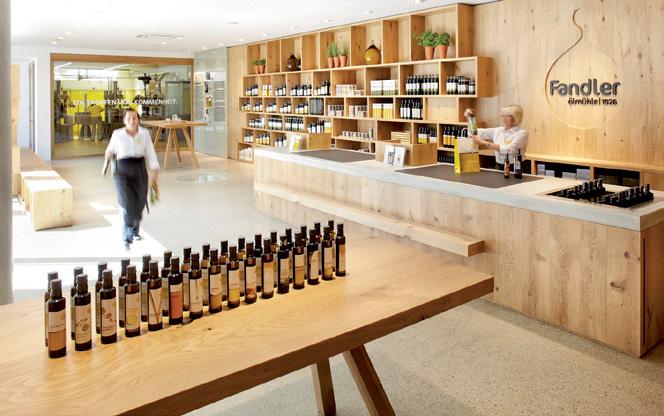
Museum of Folklore
The museum of folklore illustrates the life of farmers in the region, but it does not only take visitors back to the “good old days”, it also allows them to experience extraordinary exhibits and curiosities like a drill for creating square holes or a manually operated device for haircutting.
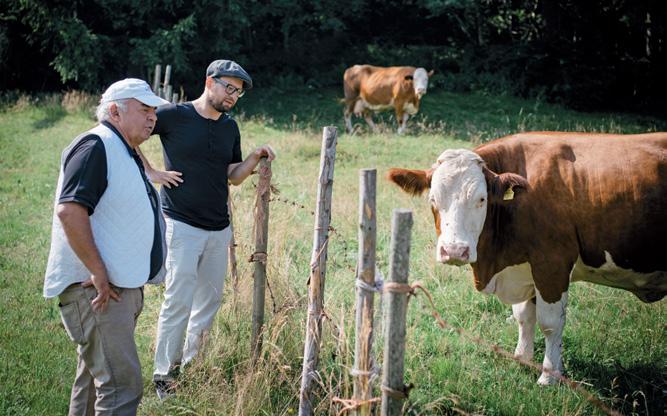
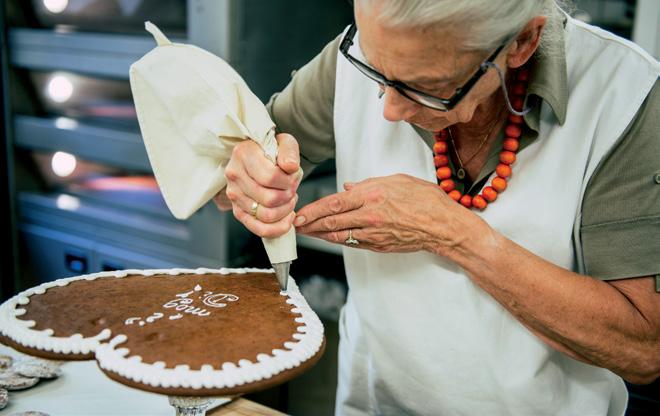
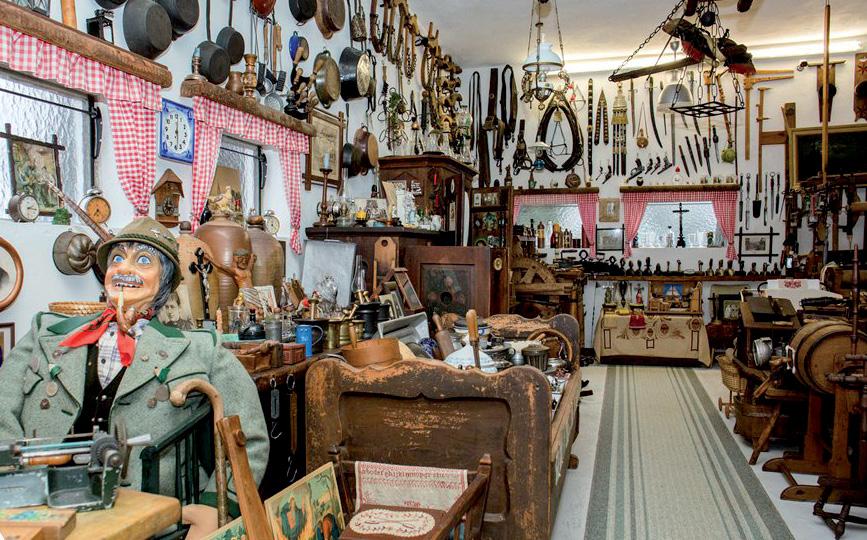
Mrs. Krogger
Prätis 117, 8225 Pöllau
Tel: +43 3335 3567
Opening Times: at any time by appointment
Admission: voluntary donation
A free gift with your holiday
Over 180 participating holiday accommodations will provide you with this free card so that you can enjoy reduced or free entry to over 250 Styrian excursion destinations. Visit museums, spas and wellness facilities, manufactories, historic sites and much more during your stay. The GenussCard opens the door to an almost limitless range of leisure activities. Discover four regions in Styria with one Card - Styria’s thermal and volcanic region, Eastern Styria, Southern Styria as well as Graz and its surrounding area.
To find out more about the GenussCard, participating accommodations, terms of validity, destinations as well as terms & conditions, please visit the website or have a look in the information brochure. Children accompanied by their parents are our most valuable guests and will also receive the GenussCard from the age of 6 onwards. Children under the age of 6 are eligible for free entry at most destinations without the GenussCard.
www.genusscard.at
Collect some lasting memories!
Tourismusverband Oststeiermark

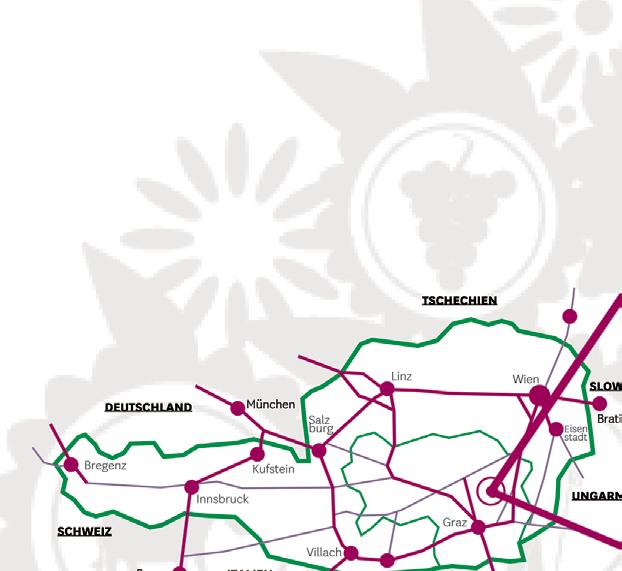
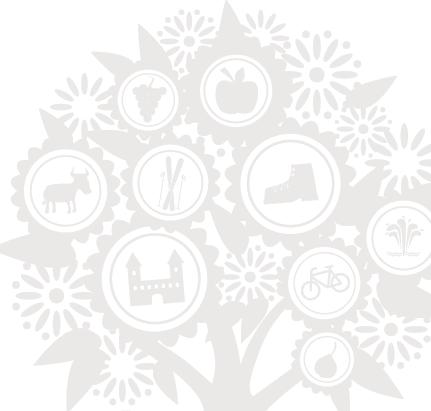
Geschäftsstelle Naturpark Pöllauer Tal Schloss 1, 8225 Pöllau
Tel.: +43 3335 4210 | naturpark-poellauertal@oststeiermark.com
www.oststeiermark.com

www.naturpark-poellauertal.at
#easternstyria #austriasgarden
#visiteasternstyria
Fotos: © Bergmann, Fischer, fotolia, KEM, Lang, Moritz, Pertramer, Schweighofer, Schwetz, shutterstock,
Übersetzungen: Roswitha Krall |
Impressum: F.d.I.v.: TVB Oststeiermark, GST Naturpark Pöllauer Tal |

STG, Strassegger, Strasser, TVB Oststeiermark, Wasserbauer | Design: Werbeagentur KAUFMANN | DRUCK: Schmidbauer GmbH, 7400 Oberwart | Vorbehaltlich etwaiger Satzund Druckfehler. Stand 3/23
